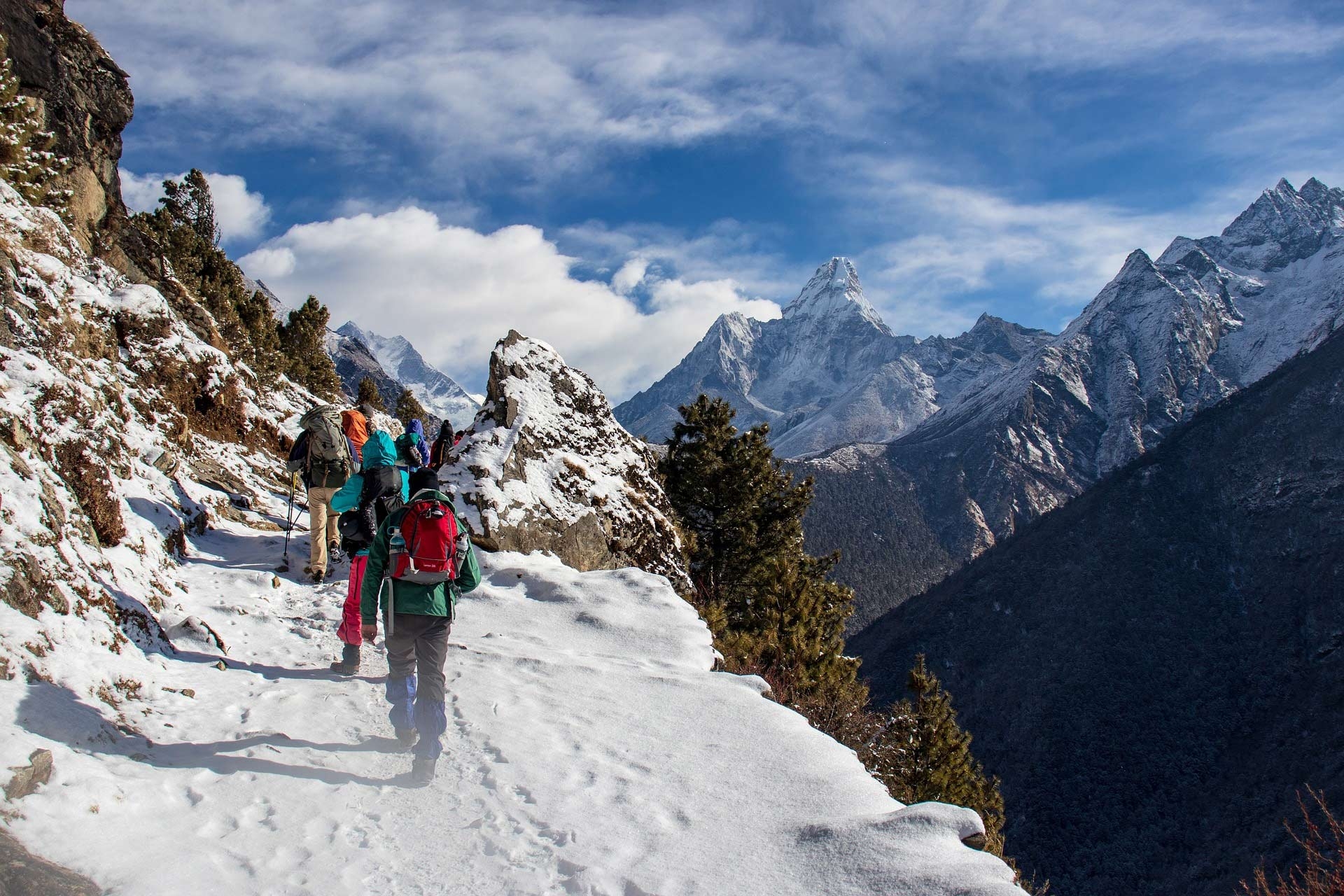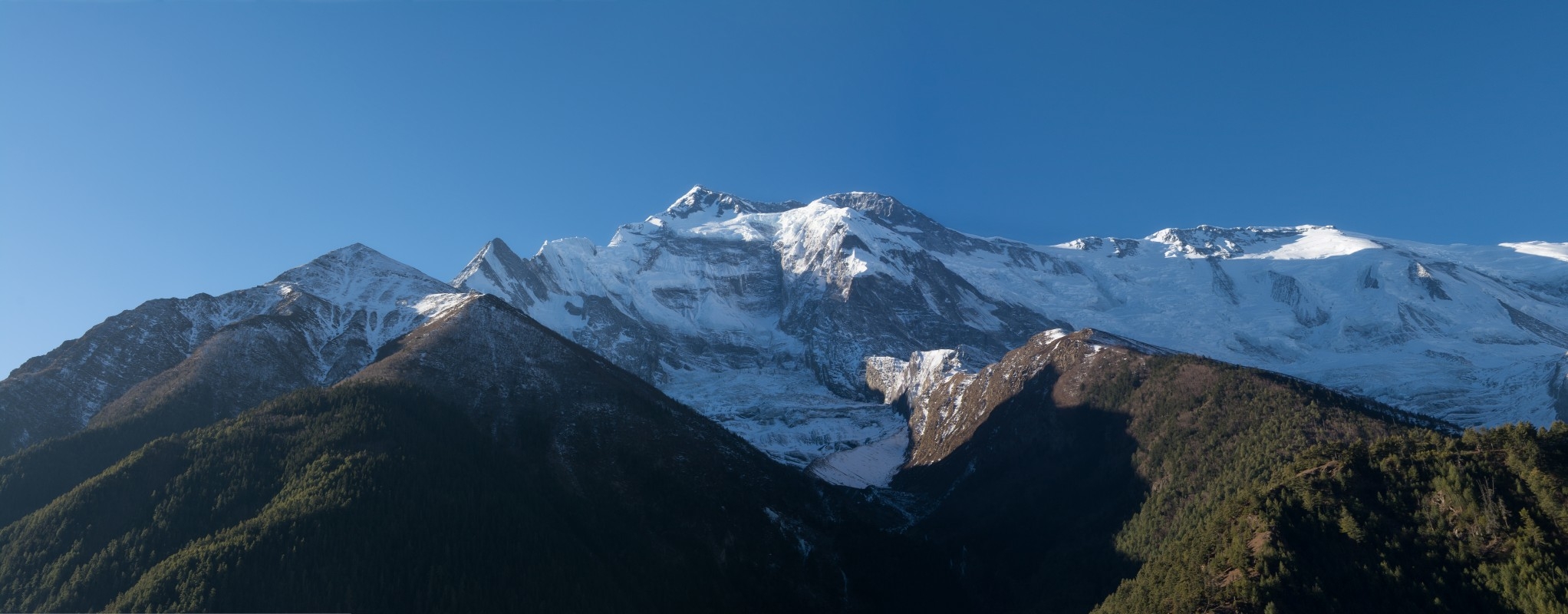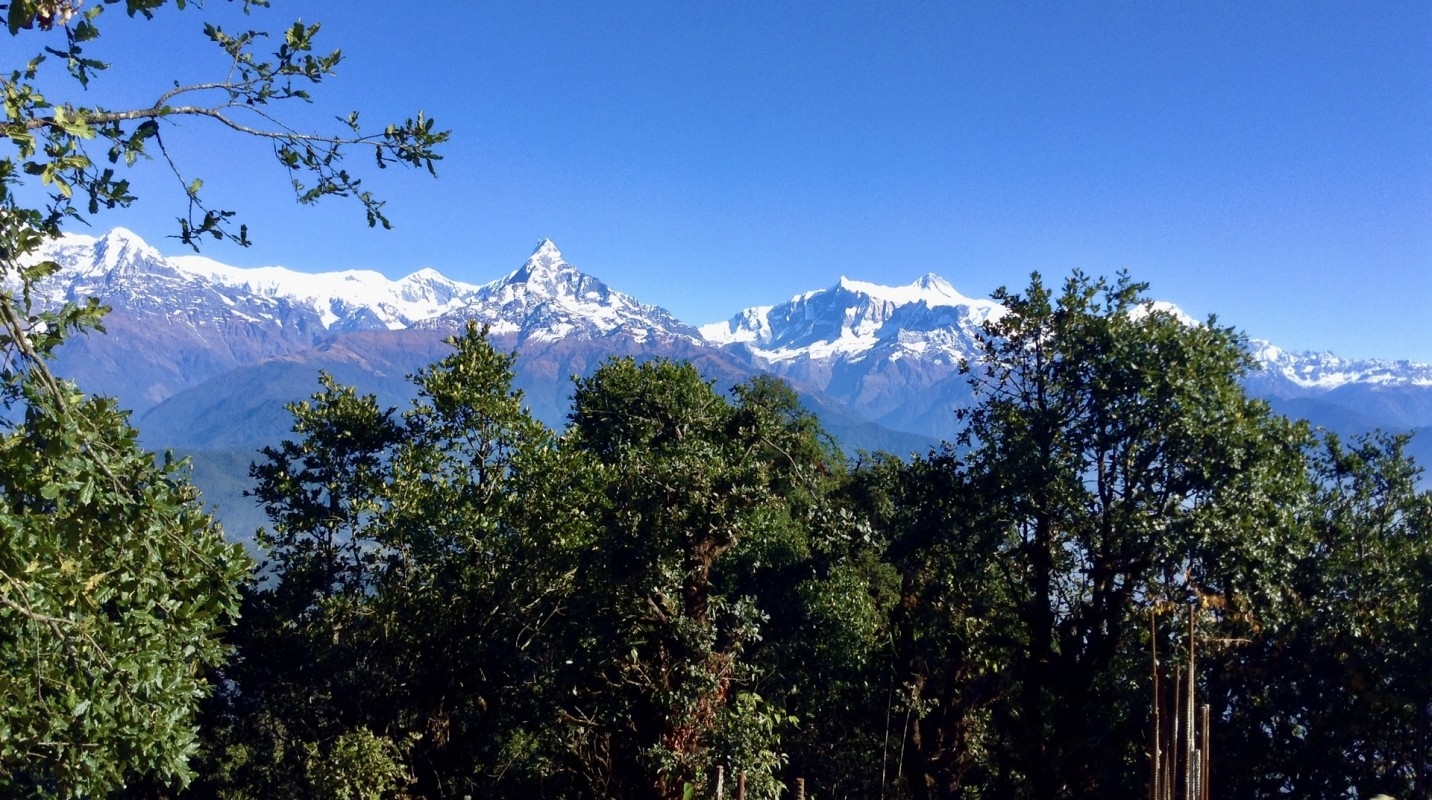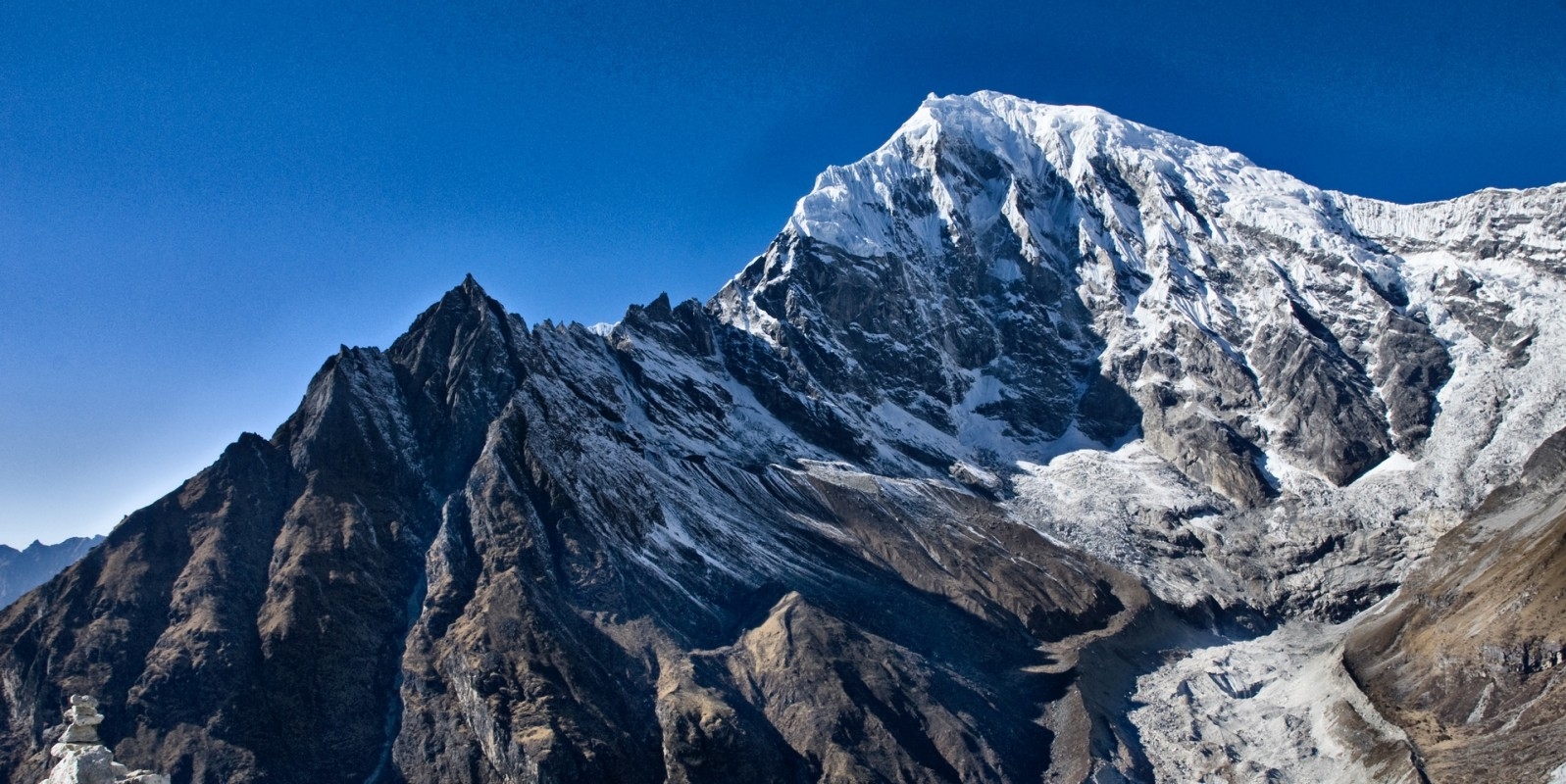

Best time to travel to Nepal
Nepal is a country of differences with various landscapes, including towering mountain ranges, lush forests, and a vibrant cultural heritage. The best time to travel to Nepal depends on your preferences and the type of excursions or events you intend to participate in. Generally, Nepal has four distinct seasons, each with unique charms and challenges.
Autumn Season: September to November is Nepal's best time for trekking and outdoor activities. Clear skies, pleasant temperatures, and festivals like Dashain Tihar and Chhat make this period ideal for experiencing Nepali culture.
Winter Season: Cold temperatures start in late November or early December, but clear skies suit budget travelers. Lower-elevation treks and skiing/snowboarding in ski resorts are popular activities.
Spring Season: From late February to May, warmer temperatures make it perfect for trekking. Rhododendrons bloom, adding to the scenic beauty. Celebrations like Holi and Buddha Jayanti occur during this time.
Summer Season: Monsoon rains from June to August make trekking challenging, but it's a great time to experience lush greenery and agriculture. Ideal for peace seekers and cultural tours of cities accessible by road.
Fitness and Training:
Trekking and climbing in Nepal's high-terrain Himalayas require physical fitness and training for a safe journey. Trekking involves walking long distances, sometimes for hours daily, over different terrain and at high altitudes. To build stamina and prepare the body, it's best to start fitness activities a few months before the trip, including cardio, strength, and endurance training.
Your journey to Nepal can be safe and successful with physical fitness, training, and preparation. Be aware of the risks and challenges, and take necessary safety measures for a fun and secure trip.
Tims and Permit
Mundum Trekking is a newly operated trekking site, so until today, you do not need any TIMS or Permit.
Entry permit and requirements (About Visa)
To visit Nepal, you need a valid passport and a visa. You can quickly get an arrival visa at entry points or Kathmandu's Tribhuvan International Airport. However, some people need a permit before they come, so it's good to check with the nearest Nepalese embassy.
Some nationalities that don't get visas from immigration entry points in Nepal are Nigeria, Iraq, Ghana, Afghanistan, Swaziland, Zimbabwe, Somalia, Palestine, and Ethiopia.
There are three types of visas, as in the table below:
Fifteen days, 30 days, or 90 days. The cost varies from $30 to $125 depending on how long you want to stay. You can pay in US dollars or other significant currencies, sometimes even Nepalese rupees.
If you're coming for business, you can get a suitable visa for up to 5 years. The fee depends on how much money you're investing. If you invest less than 10 million Nepalese rupees, it's $35 per month, $400 per year, or $1000 for five years. If you invest more, the fees are lower; if you invest more than 100 million Nepalese rupees, you don't have to pay any fees.
People from SAARC countries get a free 30-day visa. Indians don't need a visa, but they must show ID, like a passport or citizenship card. Make sure your passport is valid for at least six months. And it's a good idea to have travel insurance which covers medical treatment and emergency evacuation.
Some places in Nepal require a separate permit to visit. Our TIMS card and Permit fee section provides more details.
Travel Insurance:
When traveling to Nepal, travel insurance that covers medical emergencies, accidents, and cancellations is essential. We recommend a policy of at least USD 100,000 coverage to provide financial security in case of unexpected events such as altitude sickness or accidents. Please Choose an insurance provider with a good reputation and ensure your policy covers chopper rescue costs in high-altitude areas. Take a copy of your insurance policy and emergency contact details for peace of mind during your trip.
Trip Safety:
We highly give top priority. We provide experienced guides with first aid kits and necessary safety gear to ensure a safe hand. Our team monitors weather and trail conditions and takes precautions to avoid risks. Before starting the trek, we discuss the trip to provide a clear understanding and ensure a reliable experience.
Guide and Porter Arrangement:
Our company, Asiana Treks and Tours, focuses on responsible tourism in Nepal. We make sure our guides and porters are well-trained in trekking and mountaineering. They know a lot about the areas we go to, including geography, history, customs, and culture. We train them regularly in safety, first aid, and environmental conservation. We follow guidelines to treat our porters fairly, providing them good pay, accommodation, and meals during treks. Our guides and porters are essential team members, and we appreciate their hard work. When you trek with us, you support ethical tourism in Nepal, making your trip meaningful and memorable.
Asiana Treks and Tours prioritizes your safety and enjoyment. Our knowledgeable guides, reliable equipment, and safety measures ensure a great trekking experience in Nepal.
Packing Checklist:
When planning a trip to Nepal, packing the right gear is crucial for a successful journey. This includes clothing, equipment, and accessories tailored to your trek and the time of year. If you're trekking, pack light unless you're hiring a porter. Consider renting or buying gear in Nepal to save space. Ensure your equipment is high-quality and in good condition to avoid problems in the mountains. Take our suggestions to prepare your baggage correctly. Lastly, double-check the weather forecast and ensure you have all the necessary items for a safe and comfortable trip.
Teahouse Facilities:
Guest houses are fundamental to staying while trekking in Mundum. They're very simple lodges with rooms, eating areas, and toilets. Unlike Annapurna and Everest, they serve limited choice but enough food. Rooms usually have twin or bunk beds, and bathrooms are shared. They provide blankets and pillows. Our company offers sleeping bags, but bringing one for extra comfort is a good idea.
Safe drinking water:
Staying hydrated is essential while trekking in Nepal's Himalayan region. Tap water is available in lower areas, but you must purify it to keep you safe. Guest houses have mineral water in some places along routes, but it can be costly. Our guide will assist you in buying a boil and filtering water. However, we suggest bringing a water filter or purification tablets and a Steri pen to treat water from natural sources along the trail, which is a good idea.
Toilet Facilities:
Most teahouses have simple squat toilets along the trails. These toilets usually have water, but it's a good idea to bring your toilet paper. You can also rent restrooms at nearby teahouses or find a private spot along the trekking routes.
Internet Connectivity:
There is no Waife and Internet connectivity from the data signal is available but poor due to the remote location; you can also get Internet access using a local SIM card and data packages available at Kathmandu airport or nearby shops. To get a SIM card, you'll need a passport-sized photo and a copy of your passport. It's a good idea to compare prices and data packages from telecom companies like Ncell and Nepal Telecom before buying. Knowing about teahouse connectivity, our guide will suggest connections.
Altitude Sickness and Acclimatisation:
Altitude sickness is common among hikers in Nepal's Himalayan Region. It happens when the body doesn't get enough oxygen at higher elevations, causing headaches and dizziness. Acclimatization is essential to prevent this. It means gradually getting used to higher altitudes by resting, drinking fluids, and ascending slowly. Spending an extra day at lower elevations before going higher is the best way to avoid altitude sickness. Hydration is the main issue during trekking to prevent dehydration, which can worsen altitude sickness. Drinking plenty of water, tea, and soup can help. Trekkers can also take medicines like acetazolamide or dexamethasone to relieve symptoms, but it's best to consult a doctor first. Proper acclimatization techniques, like "climb high, sleep low," and staying hydrated, can reduce the risk of altitude sickness. Booking with an experienced guide can ensure you get the right advice and help during your trek.
Arrival in Kathmandu 1337 meter When you arrive at Tribhuvan International Airport in Kathmandu, our representative at the Airport will be carrying a signboard with our company’s name and sometimes your name. Welcome by our representative at the Airport, then you will be transferred to the hotel and checked in. For a while, take time to refresh, A trip briefing will follow later today, and the time will be notified to you by our representative who picks you up from the Airport. He will let you know about your tour and travel orientation. If you are tired from a long journey, take a rest if not. Then, please be ready to explore and relax a bit in the surrounding important tourist hub Thamel for your convenience tell you to know about some good restaurants, ATMs, money changers, supermarkets, and necessary gear shops for your trip. If you arrive out of our office time, we rescheduled for tomorrow morning or evening for the trip orientation.



We take you for a day tour of cultural heritage monuments in Kathmandu valley after breakfast. The tour will give you a mixed insight into the history, culture, art, architecture, and spirituality of Kathmandu valley. The sites include; Swoyambhunath aka Monkey Temple: The oldest of all sites in Kathmandu valley, Swoyambhunath is an important Buddhist spiritual site having a history of over two thousand years old. This site has gained a popular name as a monkey temple as this small forested hill is a good habitat for hundreds of monkeys. The visit there will heighten your spiritual and cultural experience. Patan City including Patan Durbar Square: A tour of the medieval city of Patan gives you a great insight into the ethnic Newari culture, Buddhist spirituality, religious harmony, art, and architecture while you stroll around the charismatic alleys taking you to magnificent local community squares known as Bahal and eventually leading you to an incredible medieval palace square. The monuments and skill of the local artisans displayed on those monuments in the square will stun you with their unbelievable charm. Boudhanath Stupa: The largest of its kind in the world, this magnificent stupa is a very important center of faith for the people following Tibetan Buddhism. This place is a nice Circular Square with a stunning stupa in the middle of it which spreads a lot of spiritual vibrations around the atmosphere. Overnight hotel in KTM B/B.




Today is a long driveway we start early in the morning we took a 12-hour drive from Kathmandu via the mid-hill road between Sindhuli and Khurkot. On the way, we stopped by the Halesi Temple, a popular Hindu, Buddhist, and Kirati pilgrimage site. The devotees were engaged in devotion and meditation. We arrived at Diktel Bazaar, the Khotang district's administrative headquarters, after an hour and a half of driving. We spent 1.5 hours ascending the peak of Rupakot the following morning (2526m). From the mountaintop, we could see a large number of snow-covered mountains, including Dudhkunda, Everest, Lhotse, Makalu, and other mountains from a hilltop. Overnight at Khotang Bazar headquarter of Khotang district B/L/D




Today in the morning we ascended for 1.5 hours in the early morning to reach the top of Rupakot's hill 2526m. From the top, we could see a large number of snow-covered mountains, including Dudhkunda, Everest, Lhotse, Makalu, and others. a well-liked location for gatherings and worship during special occasions. Infrastructure improvements and promotional efforts are needed to fully achieve this hilltop's tourism potential. After lunch, we drove 42 km east along the mid-hill roadway to Chakhewa Pass, 2300 m. The Mundum Trek begins at the boundary between the districts of Bhojpur and Khotang. Although there are local lodges in Chakhewa, we choose to stay at the Gothesing homestay a few KM further down Chakheba overnight at Gothesing Homestay. B/L/D.




Today early morning we set off on our hike to Temple Hill. The hill is famous for its religious importance and is also a popular tourist destination among the local people. During our hike up to Temke, we were greeted by the dazzling sunrise. The gradual ascending hike of two and half hours towards the south of Chakhewa is rewarding. It is a steady uphill hike through the lush rhododendron forest. Temke Hilltop is situated at 3005 m from the sea level and is commonly shared by Bhojpur and Khotang districts. At the hilltop, we were astounded by witnessing a panoramic view of the Himalayas view. such a wide Himalayan range The hilltop provides an excellent panoramic 180 0 view of Himalayan ranges from Manaslu, Dorje Lakpa, Number, Karyalung, Gaurishankar, Kwangde, Choyu, Kusum Kangaroo, Thamserku, Khangtega, Kysar, Mera Peak, Nuptse, Mt. Everest, Lhotse, Chamlang (Dhurbe Hatti Himal), Makalu to Kanchenjunga in the east. There are Mahadev Temple and Jogi Cave nearby and its surrounding is a breathtaking place to stroll around. It's a wonderful hilltop. Overnight at Gothesing homestay. B/L/D.




Today after breakfast, the trail leads at the same elevation, going through grazing land of sub-tropical, temperate, and sub-alpine forests. The route is kept fascinating by continuous gradual up ridge walks, stunning Himalayan mountain ranges throughout the trek along the forested terrain, as well as far views of the mid-hill sceneries. Haans Pokhari is accessible by a 4-5 hour easy climb (Duck Pond, 2962m). A viewpoint worth ascending is Maiyung Danda (3333m), which is located to the northeast and stands tall at a few-hour ascent. overnight at Hans Pokhari. B/L/D.




Today after breakfast we start our trek via In dense forests, you can find rhododendron, oak, orchid, chinquapin, juniper, and other types of flora, as well as medicinal herbs. Walking along open ridges under a sky filled with nothing but blue was a once-in-a-lifetime journey. The setting is tranquil, serene, and simply a wonderful trip in a harsh environment. The small Rai hamlet is only a few hours below the ridges, and the top area is covered with grassland and woods, which are home to a variety of wild animals and birds, including red pandas, wild boars, Himalayan Thar, barking deer, and partridges. There are numerous resting spots built by Kirati ancestors every couple of hours of walking. After a few ups and downs, the trail heads north to Saatdobate 3122 meters. Saatdobate and Hyakule are nearby, and both have plenty of water sources. While hiking up the ridges, one will come across shepherds' cottages every few hours. Overnight at Satdobate B/L/D.




Today after breakfast we are on wards to Salpa Bhanjyhang, the trail meets the Arun Valley trek, following in the footsteps of the first Everest explorers. Few travel guides mention HW Tillman's 1950 walk from Hile to Lukla thru the Arun Valley. It leads you through into the lush green terrain of the mid-hill zone, with steep climbs and strenuous trails, especially when you reach Siluchung hill. The steep climb from Lauri Danda to Rawa Dhap (3426m), where there aren't many cowsheds, takes two to three hours. We had a lot of help setting up camp because the herders quite often built their tents near water sources. The following day was a leisurely 5- to 6-hour hike. We came across Choutara, prayer flags, and a Chorten. Salpa Bhanjyang 3348m is a pass.A pass close to the Arun Valley route will be achieved. Salpa Pokhari 3500 meters, a sacred pond, is just 500 meters north of the pass where hordes of worshippers people gather to pay homage and ask for their wishes to be granted. Overnight at SalpaBhanjyang.B/L/D.




Today is the hard day of trekking. early in the morning, heading onward to Shilichung peak the highest point in the Bhojpur district is also a common pilgrimage centre for Buddhists, Hindus and Kirati. It shares a common border with Solukhumbu, Bhojpur, Khotang, and Sankhuwasabha. It takes about 3-4 hours of a steep climb to reach the top of Salpa Bhanjyang. It provides excellent sunrise and sunset views.The hilltop offers close-up stunning views of Dorje Lakpa, Numbur, Karyalung, Gaurishankar, Shishapangma , Kwangde, Choyu, Kusum Kangaroo, Thamsekrku, Khangtega, Kyasar, Mera Peak, Nuptse, Mt. Everest, Lhotse, Chamlang (Dhurbe hatti himal), Makalu to Kanchenjunga in the east. The ridge has great religious importance for the Kirati people. It is the final summit where Mundumi receives the final blessing from their gurus. Overnight at Salpa Bhanjyang. B/L/D.




After breakfast we are returning the same route from Salpa Bhanjyang to Rawadhap and Hyakule. Overnight Hykule. B/L/D.




Today the route returns in the same way from Hyakule, Saatdobate, and Maiyung before down to Pakhuwa Bhanjyang and continuing on to Suntale to reach Bhojpur Bazaar. The Arun Valley walk path can also be used. The trail can be completed in 11 to 14 days. trekkers from all over the world would enjoy the distinct culture, hospitality, and natural beauty of eastern Nepal. He also stated his desire to travel there as soon as possible for both studies and hiking. The route then returns in the same direction to Rawadhap, Hyakule, Saatdobate, and Maiyung before dropping to Salpa Bhanjyang. overnight at Bhojpur.B/L/D.




Today we explore Bhojpur bazar, Taksar to see the some temple, old trade walking route as well as quine made place log time before overnight at Bhojpur. B/L/D.




Today early morning fly back to Kathmandu from Bhojpur and free and easy day for relax or shopping Overnight at kTM. B.











